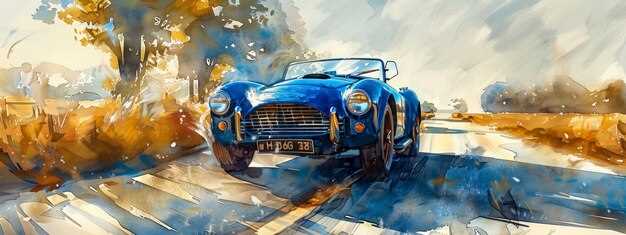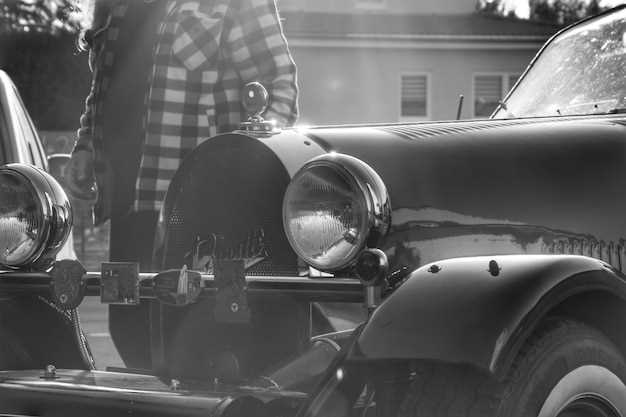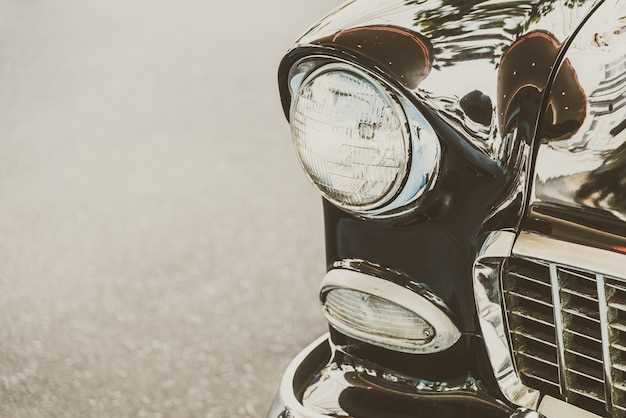
The world of motorsport has always been characterized by innovation, speed, and a relentless pursuit of excellence. Among the various forms of racing, rally driving stands out for its unique blend of skill, endurance, and adventure. Classic rally cars have not only captivated the hearts of enthusiasts but have also played a pivotal role in shaping the history of motorsport.
From the rugged landscapes of early competitions to the technical precision required in modern events, these iconic classic rally cars have left an indelible mark on the sport. Each vehicle, with its distinctive design and engineering prowess, tells a story of triumph, resilience, and the evolution of automotive technology. This article delves into the legendary machines that not only dominated the stages but also defined eras in rallying history.
By examining the characteristics and contributions of these remarkable automobiles, we can better appreciate how they have influenced racing techniques, fan culture, and the automotive industry as a whole. Join us as we explore the classic rally cars that have become symbols of speed and endurance, forever etched in the annals of motorsport history.
Key Features of Legendary Rally Cars: What Made Them Stand Out?
Legendary rally cars have left a significant imprint on the world of motorsport, primarily due to their distinctive characteristics that set them apart from ordinary vehicles. One of the most critical features is their advanced all-wheel-drive systems, which provide exceptional traction and control on various surfaces, from gravel to snow. This technology revolutionized rallying by enabling drivers to maintain high speeds while navigating challenging terrains.
Another hallmark of iconic rally cars is their lightweight construction. Manufacturers often utilize materials such as aluminum and carbon fiber to reduce weight, enhancing agility and performance. This emphasis on weight reduction contributes to quicker acceleration and improved handling, essential for success in competitive motorsport environments.
The suspension systems in these classic rally cars are meticulously designed to absorb shocks from rough roads, ensuring driver and passenger comfort while maintaining optimal tire contact with the ground. Adjustable suspensions allow teams to customize their vehicles for specific rally conditions, further enhancing performance and adaptability.
Powerful engines play a crucial role in defining legendary rally cars. Turbocharged engines, for example, offer a strong power-to-weight ratio, delivering rapid acceleration and enabling drivers to tackle steep inclines and sharp corners effectively. The signature sound of these engines also adds to their allure, creating an unforgettable experience for fans and competitors alike.
Moreover, the iconic aesthetics of classic rally cars cannot be overlooked. Distinctive body designs, vibrant color schemes, and sponsor decals contribute to the cars’ visual identity, making them instantly recognizable. This visual appeal helps cultivate a strong fan base and a lasting legacy within motorsport history.
Finally, the technological innovations found in legendary rally cars, such as advanced navigation systems and telemetry, have set benchmarks for future vehicles. These advancements not only enhance performance but also improve safety and reliability during intense competitions.
Milestone Races and Their Impact on Rally Car Development

Throughout the history of motorsport, certain rally events have stood out as pivotal moments that influenced the evolution of rally cars. One such notable event is the Monte Carlo Rally, first held in 1911. This classic rally not only tested drivers’ skills on treacherous mountain roads but also pushed manufacturers to innovate for improved performance in diverse weather conditions. As a result, vehicles built for this event began incorporating advancements in all-wheel-drive systems and enhanced suspension setups.
Another significant milestone was the 1980 Rallye de Portugal, which featured the emergence of the iconic Group 4 cars. This event showcased the raw power of vehicles like the Lancia Stratos and the Ford Escort RS1800. Their success paved the way for the development of specialized rally cars that could navigate rough terrains while maintaining speed. The emphasis on lightweight design and aerodynamic efficiency during this period remarkably shaped future rally car designs.
The introduction of the World Rally Championship (WRC) in 1973 further transformed rally car development. Cars like the Audi Quattro dominated the scene, demonstrating the effectiveness of turbocharged engines and four-wheel drive. The 1982 WRC season, particularly the famous Acropolis Rally, emphasized the durability of rally cars, leading manufacturers to focus on creating more robust vehicle architectures, ensuring they could withstand the extreme conditions faced during competitions.
The 1990s saw another leap in technology with the debut of the World Rally Cars, heavily influenced by the legendary Colin McRae’s triumph at the 1995 RAC Rally in the Subaru Impreza. This success not only popularized rallying but also reinforced the importance of performance-oriented designs, leading to continuous advancements in engine power and handling characteristics. The focus shifted to creating cars that not only performed well on gravel roads but could also excel on tarmac stages.
Finally, the introduction of hybrid technology in recent years has marked a new chapter in the evolution of rally cars. Events like the 2021 Monte Carlo Rally demonstrated how manufacturers are integrating eco-friendly technologies without compromising performance. This innovative approach reflects a broader trend within motorsport toward sustainability, influencing future regulations and vehicle designs.
In summary, milestone races have significantly shaped the development of classic rally cars. Each landmark event not only tested the limits of engineering but also propelled the industry forward, ensuring that rally cars continue to evolve in response to the ever-changing demands of motorsport enthusiasts and environmental considerations.
The Influence of Classic Rally Cars on Modern Motorsport Culture

Classic rally cars have significantly shaped the landscape of modern motorsport culture, offering a rich heritage that continues to inspire enthusiasts and professionals alike. These vehicles not only set the benchmark for performance and innovation but also forged a passionate community around rallying that remains vibrant today.
One of the most profound impacts of classic rally cars is their role in developing the engineering and design standards we see in contemporary vehicles. Cars like the Lancia Stratos and Ford Escort Mk II pushed the limits of technology, paving the way for advancements in aerodynamics, suspension, and tire performance. The spirit of innovation that characterized these classic models now permeates modern motorsport, inspiring engineers to push boundaries and enhance vehicle capabilities.
The aesthetic design of classic rally cars also influences today’s automotive culture. Their distinctive shapes, vibrant color schemes, and iconic decals are often emulated by modern manufacturers in both motorsport-specific cars and consumer models. This homage not only preserves the legacy of classic rally models but also strengthens brand identities within the competitive landscape of motorsport.
Furthermore, the camaraderie born from the classic rallying community has evolved into a broader motorsport culture. Events celebrating these historical vehicles, such as classic car rallies and heritage motorsport festivals, bring enthusiasts together, fostering a sense of belonging and shared passion. This culture encourages engagement across generations, ensuring that newcomers are introduced to the rich history of rallying and its ongoing influence.
In terms of competitive spirit, classic rally cars have established a benchmark for driving skill and strategy that modern racers strive to achieve. The challenges faced in the rugged terrain during the heyday of rallying offer valuable lessons in navigation, vehicle handling, and teamwork. These aspects are foundational to the ethos of motorsport today, emphasizing not just speed but also skill and resilience.
In summary, the legacy of classic rally cars is deeply woven into the fabric of modern motorsport culture. Their technological breakthroughs, aesthetic influences, and community-building aspects continue to inspire and shape the future of rallying and motorsport as a whole.



